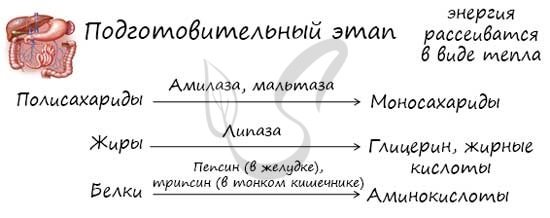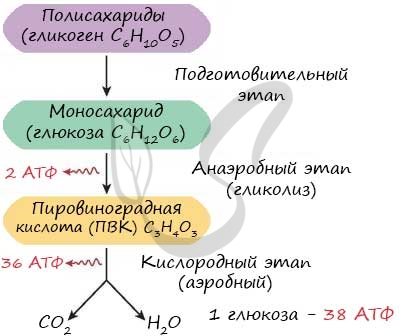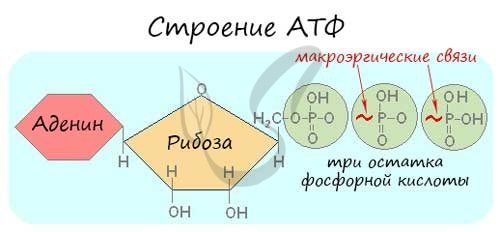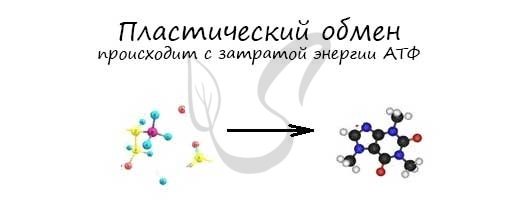Metabolism is the set of chemical reactions that keep a person alive. Our body receives all useful elements from the external environment, mainly from food and water. Metabolic disorders can negatively affect the condition of all organs and systems, and therefore require mandatory treatment.
There are metabolic disorders:
- protein;
- carbohydrate;
- fat;
- water;
- mineral;
- other substances (iron, iodine, etc.).
Causes of metabolic disorders
There are a large number of possible reasons, including:
- improper, unbalanced diet;
- physical inactivity;
- hereditary predisposition;
- physical, emotional stress;
- eating disorders;
- dehydration;
- intoxication associated with work in hazardous industries and other reasons;
- taking certain medications;
- chemical dependencies;
- diseases of the endocrine system.
In some cases, there is a combination of several unfavorable factors.
Signs of metabolic disorders
Symptoms of metabolic disorders vary. As a rule, the following signs indicate a possible illness:
- deterioration of the condition of the skin, hair, nails;
- weight fluctuations;
- increased sweating;
- change in complexion;
- swelling;
- sleep disturbance;
- unsatisfactory condition of teeth;
- pain in the back, neck, muscles, joints;
- dyspeptic symptoms, stool upset, bloating, etc.;
- chills or hot flashes;
- skin rash;
- breathing difficulties, etc.
Treatment of metabolic disorders requires mandatory additional examination and accurate diagnosis. This collective term refers to many diseases, each of them has its own causes and treatment tactics. If you find yourself experiencing similar symptoms, consult a general practitioner. You should not engage in self-diagnosis and self-medication.
Diagnostic methods
During the initial appointment, the therapist will conduct a general examination, collect anamnesis and listen to complaints. Based on this information, the doctor will refer you for a comprehensive in-depth examination. Diagnostic methods that may be used include:
- laboratory blood tests - general, biochemical, and, if necessary, more specialized tests;
- Ultrasound of internal organs;
- MRI, CT;
- urine test.
Based on the results of the examination, if necessary, the patient is referred to specialists - an endocrinologist, gastroenterologist, gynecologist, etc.
Laboratory diagnosis of diabetes mellitus
Diabetes mellitus (DM) is a chronic endocrine disease characterized by high blood glucose levels. The disease is fraught with serious complications (target organs: eyes, kidneys, peripheral nervous system, heart and blood vessels).
An increase in blood sugar levels can occur both due to insufficient production of insulin by the pancreas, and due to poor susceptibility of body cells to this hormone (insulin resistance). This is what determines the type of diabetes and further treatment.
Normally, it is insulin that regulates the level of sugar concentration in the blood. If the body does not receive enough of the hormone, or is unable to use it effectively, glucose levels rise. Over time, the body's compensatory mechanisms are depleted, a persistent progressive increase in blood glucose occurs, which has a negative impact not only at the level of organs and systems, but affects overall well-being and causes corresponding clinical manifestations in the form of frequent urination, dry mouth, weakness, fatigue , weight loss.
With timely diagnosis (optimally at the stage of prediabetes, i.e. in case of impaired glucose tolerance) and strict adherence to the instructions of the attending physician, it is possible to avoid the disease, and sometimes even normalize blood sugar without the use of drugs.
It is important to note that when visiting a doctor regarding the presence of characteristic diabetic manifestations/complaints, the likelihood of normalizing carbohydrate metabolism without drug therapy is extremely insignificant/small. The examination and treatment plan depends on the type of diabetes and the presence of concomitant diseases.
In type 1 diabetes, the pancreas produces little or no insulin.
In type 1 diabetes, due to disorders/failures in the immune system, progressive destruction of insulin-producing cells of the pancreas occurs, which leads to insufficiency or complete absence of insulin in the blood. When this form of diabetes is diagnosed, the patient is prescribed insulin replacement therapy. In this case, only insulins are used as drug therapy.
In type 2 diabetes mellitus (the most common form), sufficient insulin is produced, but tissue susceptibility to its hypoglycemic effect is reduced. If necessary, the patient is prescribed medications that increase the body's sensitivity to insulin, but often the main treatment consists of a diet and physical exercise selected by the doctor.
In this case, in addition to recommendations for lifestyle changes (diet therapy, physical exercise), drug therapy may also be required.
Symptoms suspicious for the development of diabetes mellitus:
- constant thirst, dry mouth;
- frequent urination;
- dizziness, weakness;
- heaviness in the legs;
- skin itching;
- itching in the perineum;
- slow healing of scratches and wounds on the skin;
- decreased/increased appetite;
- fatigue/headache/drowsiness.
Important! Only a doctor can carry out a differential diagnosis of diabetes mellitus based on the results of laboratory tests!
If diabetes has already been diagnosed, the patient must undergo examination according to the regimen prescribed by the doctor.
After the diagnosis is made, additional examination prescribed by the doctor is carried out to exclude diabetic complications and identify possible contraindications to medications.
Diagnosis of diabetes involves taking blood and urine samples for analysis. Important: biomaterial is given strictly on an empty stomach, unless otherwise discussed in advance.
List of prescribed tests:
Differential diagnosis of forms of diabetes mellitus:
- Autoantibodies: Antibodies to pancreatic beta cells (Islet Cell Cytoplasmic Autoantibodies);
- Antibodies to insulin and GAD;
- C-peptide (C-peptide);
Diabetes mellitus - treatment monitoring (quarterly):
- Glycated Hemoglobin;
- Glucose.
Diabetes mellitus - treatment monitoring (annual):
- Biochemical blood tests;
- Alanine aminotransferase;
- Aspartate aminotransferase;
- Bilirubin total;
- Glycated Hemoglobin;
- Glucose;
- Urea (Urea);
- Sodium (Na+), Potassium (K+), Chlorine (Cl-);
- Total protein (Protein total);
- Triglycerides;
- High-density lipoprotein cholesterol;
- Low-density lipoprotein cholesterol;
- Cholesterol total;
- Biochemical studies of urine;
- Albumin (microalbumin, mAlb);
- Rehberg's test;
- General clinical blood tests;
- Complete blood count + ESR with leukocyte formula (with microscopy of a blood smear in the presence of pathological changes), venous blood;
- Biochemical studies of urine;
- Albumin (microalbumin, mAlb);
- General clinical urine tests;
- General urine test (Urine test) with sediment microscopy;
- Postprandial glucose (2 hours after eating);
- Glucose (2 hours after exercise).
In our multidisciplinary clinic, you can undergo carbohydrate metabolism studies, check insulin resistance, donate blood for glucose and other necessary tests on a day and time convenient for you. We guarantee quality and confidentiality!
"MedicCity" treats your time with respect and care for your health!
Features of treatment
Treatment is always complex, since metabolic disorders affect the condition of the entire body and often occur against the background of chronic diseases. If the cause of the disease is congenital genetic changes, then therapy is required on an ongoing basis. In this case, it is important to regularly see a doctor so as not to worsen your condition. This way, the specialist will be able to evaluate the results of treatment and adjust it if necessary.
Acquired diseases are easier to completely cure if you consult a specialist at the initial stage.
Any therapy consists of a diagnostic search for the causes of the disease and their subsequent elimination. In addition, it is important to ensure the normal intake of vitamins, micro- or macroelements into the body through diet therapy and, if necessary, drug therapy. Any case of metabolic disorder requires correction of diet, water regime, and lifestyle.
A therapeutic diet is developed by a doctor based on a specific case and professional dietary recommendations. In most cases, you need to adhere to a balanced diet: follow a diet, give up alcohol, spicy foods, marinades, spices, fried and fatty foods. At the same time, you need to eat often, in small portions.
It is important to pay attention to your overall lifestyle. Many disorders in the body are triggered during periods of stress. Therefore, it is necessary, if possible, to eliminate it or learn stress tolerance skills. A psychologist or psychotherapist can help with this. Attention should be paid to physical activity, sleep and wakefulness.
If the metabolic disorder is minor and has recently appeared, general recommendations for recovery may be sufficient. However, most often, this applies to those cases when the disease is caused by external causes.
If the pathological process arose a long time ago and was provoked by genetic (congenital) factors, then comprehensive medical care is necessary. Thus, in case of diagnosed diabetes mellitus, drug therapy together with diet therapy and some physiotherapeutic techniques may be required, in case of ovarian diseases - hormonal therapy, in case of thyroid pathology - taking thyroid hormones or, conversely, thyrostatics, etc. In rare cases, surgical intervention may be necessary, for example, with detection of large thyroid nodules, complicated ovarian cysts or hyperprolactinemia associated with pituitary macroadenoma.
Energy exchange
Metabolism
Metabolism (metabolism) consists of the processes of splitting and synthesis - dissimilation and assimilation, constantly occurring in the body. For life to continue, the amount of energy in must exceed (or at least equal) the amount of energy expended, so dissimilation and assimilation maintain a certain balance with each other.

Energy exchange
Energy metabolism (dissimilation - from the Latin dissimilis - dissimilar) is the opposite side of assimilation of metabolism, a set of reactions that lead to the release of the energy of chemical bonds. These are reactions that break down fats, proteins, carbohydrates, and nucleic acids into simple substances.
There are three possible stages of dissimilation: preparatory, anaerobic and aerobic. The habitat determines the number of stages of dissimilation. There can be three of them if the organism lives in an oxygen environment, and two if we are talking about an organism living in an oxygen-free environment (for example, in the intestines).
Let's discuss the stages of energy metabolism in more detail:
- Preparatory stage
- Anoxic stage (anaerobic) - glycolysis
- Oxygen stage (aerobic)
The preparatory stage is carried out by enzymes in the gastrointestinal tract. As a result of the action of enzymes, complex substances are transformed into simpler ones: polymers break down into monomers. This is accompanied by the breaking of chemical bonds and the release of energy, most of which is dissipated in the form of heat.
Under the action of enzymes, proteins are broken down into amino acids, fats into glycerol and fatty acids, and complex carbohydrates into simple sugars.

This stage is the last for anaerobic organisms living in conditions where there is no oxygen. At the stage of glycolysis, the glucose molecule is broken down: 2 molecules of ATP and 2 molecules of pyruvic acid (PVA) are formed. This stage occurs in the cytoplasm of cells.
This stage is available only to aerobes - organisms living in an oxygen environment. From each PVK molecule formed at the stage of glycolysis, 18 ATP molecules are synthesized - in total, the yield from two PVK is 36 ATP molecules.
Thus, a total of 38 ATP can be obtained from one glucose molecule (glycolysis + oxygen stage).
The oxygen stage occurs on the mitochondrial cristae (folds, protrusions of the inner membrane), where the highest concentration of oxidative enzymes is. The main role in this process is played by the so-called Krebs cycle, which is studied in detail by biochemistry.

ATP - adenosine triphosphoric acid
It is difficult to overestimate the role of ATP, a universal source of energy, in the cell. The ATP molecule consists of a nitrogenous base - adenine, a carbohydrate - ribose and three phosphoric acid residues.
Between phosphoric acid residues there are high-energy bonds - covalent bonds that hydrolyze releasing a large amount of energy. They are usually denoted by the typographical tilde “∽”.

ATP is hydrolyzed to ADP (adenosine diphosphoric acid), and then to AMP (adenosine monophosphoric acid). ATP hydrolysis is accompanied by the release of energy (E) at each stage and can be represented by the following diagram:
- ATP + H2O = ADP + H3PO4 + E
- ADP + H2O = AMP + H3PO4 + E
- AMP + H2O = adenine + ribose + H3PO4 + E
Plastic exchange
ATP is a universal source of energy in the cell: the energy of macroergic bonds of ATP is used for plastic exchange reactions (assimilation) that occur with energy consumption: protein synthesis on the ribosome (translation), DNA doubling (replication), etc.
As a result of plastic metabolism, the synthesis of proteins, fats and carbohydrates occurs in our body.

© Bellevich Yuri Sergeevich 2018-2021
This article was written by Yuri Sergeevich Bellevich and is his intellectual property. Copying, distribution (including by copying to other sites and resources on the Internet) or any other use of information and objects without the prior consent of the copyright holder is punishable by law. To obtain article materials and permission to use them, please contact Yuri Bellevich
.
Popular questions
What happens if metabolic disorders are not treated?
Lack of treatment can lead to serious illness. For example, when there is a lack of iron in the body, iron deficiency anemia develops. This disease can cause a decrease in the body's defenses, poor healing of wounds and injuries, disrupt the contractile function of the heart, lead to respiratory failure and impaired circulation in organs, and slow down the synthesis of thyroid hormones.
Lack of iodine leads to irreversible changes in the function and structure of the thyroid gland, decreased intellectual abilities, slower metabolism and other more severe consequences. Dehydration is completely life-threatening; this condition should be treated as soon as possible. That is why it is important to seek professional medical help for any type of disorder.
Can endocrine diseases disrupt metabolism and cause weight gain?
Among the internal causes of metabolic disorders, endocrine diseases occupy the first place. A lack or excess of certain hormones can be associated with congenital anomalies, neoplasms, inflammatory processes, stress, deficiency of micro- and macroelements, drinking disorders, severe infectious diseases, etc. Yes, excess body weight can be associated with metabolic disorders and endocrine diseases, but more often appears due to external factors - family nutrition stereotypes, chronic overeating, high calorie food and physical inactivity.
Foods that affect metabolic rate
You don't have to use extreme methods to change your metabolic rate. To begin with, you can use products that speed up metabolism.
| Product | Operating principle | Recommendations for use |
| Sugar | Triggers insulin synthesis - opens cells, releases energy. | 3-5 grams an hour after each meal. |
| Hot peppers | Starts digestive processes. | Provide plenty of food with this ingredient. |
| Green vegetables | Fiber triggers an additional cycle of digestive processes, and you can speed up your metabolism by eating an additional zero-calorie meal. | Separate meals 2-3 times. |
| Salad | Fiber triggers an additional cycle of digestive processes, and you can speed up your metabolism by eating an additional zero-calorie meal. | Separate meals 2-3 times. |
| Tomatoes | Fiber triggers an additional cycle of digestive processes, and you can speed up your metabolism by eating an additional zero-calorie meal. | Separate meals 2-3 times. |
| Fruits | They are sources of fructose, a low-calorie fast carbohydrate. Which, combined with an abundance of fluid, speeds up metabolism. | Replace all regular sweets with fruits. |
| Kefir | Fermented milk products are sources of protein involved in digestion. A large amount of fluid stimulates the acceleration of metabolism and blood purification. | 1-2 times a day on an empty stomach. |
| Yogurt | Fermented milk products are sources of protein involved in digestion. A large amount of liquid stimulates the acceleration of metabolism and blood purification. | 1-2 times a day on an empty stomach. |
| Coffee | Direct stimulator to increase heart rate. | Up to 250 mg in terms of pure caffeine. |
| Celery | A product with a negative calorie content puts the body into a stupor. In an attempt to digest it, additional resources are used, which increases the metabolic rate. | 100 grams of celery along with green vegetables. |
| Ginger root | Natural antioxidant. Causes a surge of stomach acid, which is perceived as an additional meal. | In the form of tea - at least 2 times a day. |
| Chamomile decoction | Metabolism normalizer. | In the form of tea - at least 2 times a day. |
| Strong tea | Direct stimulator to increase heart rate. | Up to 250 mg in terms of pure caffeine. |
| Sour juices | Causes a surge of stomach acid, which is perceived as an additional meal. | 250 ml 2-3 times a day. |
Note: It is not necessary to take all of these foods on the same day. The list is given solely for advisory purposes with an explanation of the effects of certain substances on the body.











